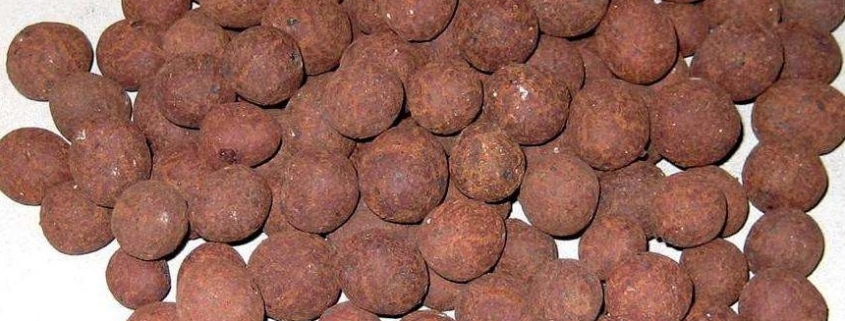1. Influence of sludge content
The ratio of raw materials is a key step in the preparation of ceramsite. It is necessary to comprehensively consider the influencing factors such as the amount of sludge, the chemical composition, the plasticity of the blank, and the economy. When using urban sludge and coal gangue as raw materials to prepare porous ceramsite, at the same temperature, the volume density of ceramsite decreases with the increase of the amount of sludge, and the water absorption and porosity increase accordingly. %, the material ball cracked seriously during the drying process; using urban sludge, bentonite and loess as raw materials to burn light ceramsite, the study found that the appropriate amount of sludge is 20% to 50%, as the sludge dries As the weight ratio increases, the internal pores of the ceramsite become larger, the number of pores becomes smaller, the pore cross-connect rate increases, the bulk density becomes smaller, the cylinder pressure strength becomes smaller, and the water absorption increases; the sludge from the water supply plant is the main material and the clay , Fly ash and glass powder are used as auxiliary materials to fire the ceramsite. The results show that when the sludge content of the water supply plant is increased from 40% to 60%, the packing density and apparent density of the ceramsite decrease, and the water absorption rate and The porosity increases accordingly. The increase in the amount of sludge, the increase in the content of organic matter in the raw meal, and the increase in the loss on ignition result in many cracks during the preheating process. Most of the studies on the preparation of ceramsite from sludge use sludge as an organic additive with a small amount (generally between 20% and 30%). At the same time, the problem of high water content of sludge further limits the large-scale utilization of sludge. Based on this, the process of firing ceramsite by using urban sludge as the main material and adding glass powder can increase the amount of sludge to 75%, so as to realize the possibility of large-scale resource utilization of sludge. In the future, the sludge pretreatment technology for the purpose of increasing the amount of sludge and the refined raw material proportioning technology will be one of the important research directions of sludge resource preparation for ceramsite.
2. Influence of raw material chemical composition
The chemical composition of sludge ceramsite raw materials will have a significant impact on the performance of ceramsite apparent density, bulk density, cylinder pressure strength, water absorption and heavy metal sealing. Studies have shown that when the content of raw SiO2 increases, the density of sludge ceramsite will increase accordingly; when the content of Al2O3 is less than 18%, the strength of ceramsite will decrease accordingly; the content of SiO2 has little effect on the strength of ceramsite . The effects of SiO2 and Al2O3 content on the physical properties, morphological structure, crystalline phase and stability of heavy metals of ceramsite were studied. Lightweight ceramsite with the lowest porosity and best sealing performance of heavy metals.
3. Influence of roasting mechanism
The influence of roasting mechanism on the performance of ceramsite mainly includes preheating temperature, preheating time, roasting temperature, roasting time, etc. The preheating temperature mainly affects the moisture and organic matter content of the ceramsite, thereby affecting the strength and apparent density of the ceramsite. Compared with the preheating temperature and preheating time, the roasting temperature and roasting time have a greater influence on the performance of the ceramsite. The higher the calcination temperature, the more vitrified the ceramsite surface and the denser internal structure, which makes the ceramsite particles stronger. As the roasting temperature of the sludge ceramsite increases, the fluxing agent is converted into liquid phase and glassy substance, which increases the volume shrinkage rate of the ceramsite, so that the density of the surface and interior of the ceramsite increases, and the water absorption rate decreases.



